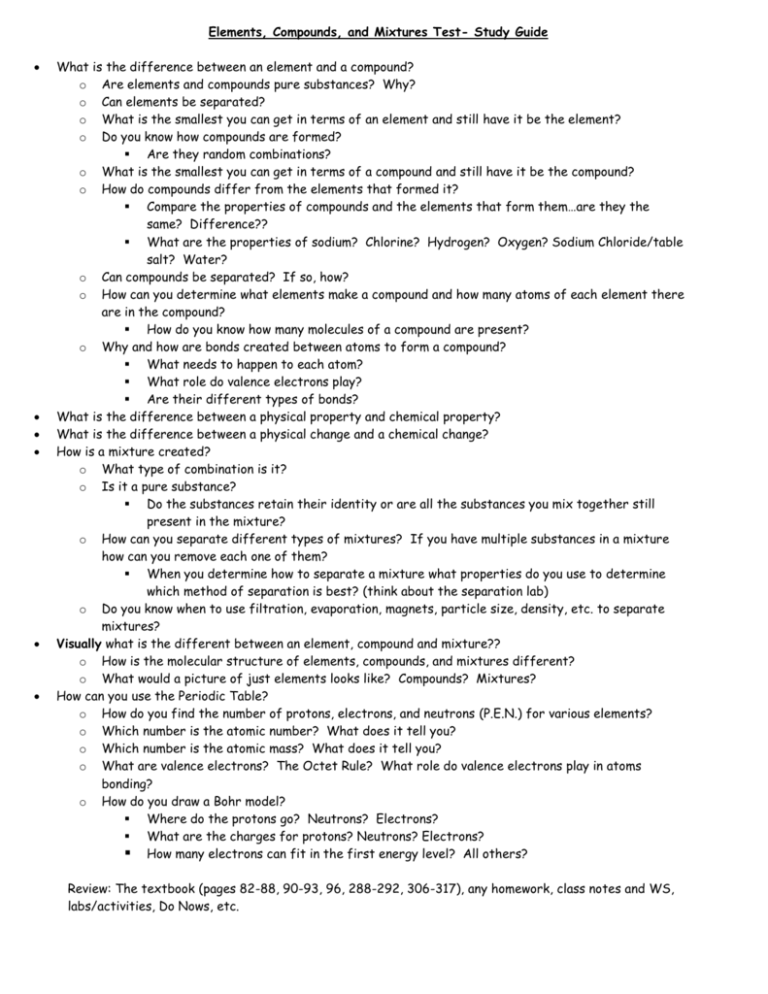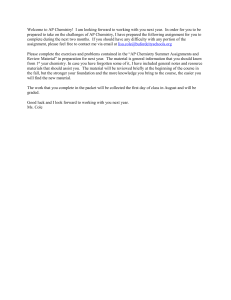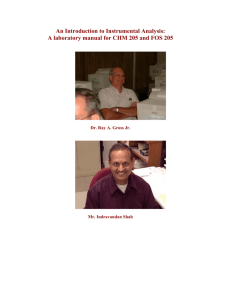Elements, Compounds, and Mixtures Test
advertisement

Elements, Compounds, and Mixtures Test- Study Guide What is the difference between an element and a compound? o Are elements and compounds pure substances? Why? o Can elements be separated? o What is the smallest you can get in terms of an element and still have it be the element? o Do you know how compounds are formed? Are they random combinations? o What is the smallest you can get in terms of a compound and still have it be the compound? o How do compounds differ from the elements that formed it? Compare the properties of compounds and the elements that form them…are they the same? Difference?? What are the properties of sodium? Chlorine? Hydrogen? Oxygen? Sodium Chloride/table salt? Water? o Can compounds be separated? If so, how? o How can you determine what elements make a compound and how many atoms of each element there are in the compound? How do you know how many molecules of a compound are present? o Why and how are bonds created between atoms to form a compound? What needs to happen to each atom? What role do valence electrons play? Are their different types of bonds? What is the difference between a physical property and chemical property? What is the difference between a physical change and a chemical change? How is a mixture created? o What type of combination is it? o Is it a pure substance? Do the substances retain their identity or are all the substances you mix together still present in the mixture? o How can you separate different types of mixtures? If you have multiple substances in a mixture how can you remove each one of them? When you determine how to separate a mixture what properties do you use to determine which method of separation is best? (think about the separation lab) o Do you know when to use filtration, evaporation, magnets, particle size, density, etc. to separate mixtures? Visually what is the different between an element, compound and mixture?? o How is the molecular structure of elements, compounds, and mixtures different? o What would a picture of just elements looks like? Compounds? Mixtures? How can you use the Periodic Table? o How do you find the number of protons, electrons, and neutrons (P.E.N.) for various elements? o Which number is the atomic number? What does it tell you? o Which number is the atomic mass? What does it tell you? o What are valence electrons? The Octet Rule? What role do valence electrons play in atoms bonding? o How do you draw a Bohr model? Where do the protons go? Neutrons? Electrons? What are the charges for protons? Neutrons? Electrons? How many electrons can fit in the first energy level? All others? Review: The textbook (pages 82-88, 90-93, 96, 288-292, 306-317), any homework, class notes and WS, labs/activities, Do Nows, etc.








